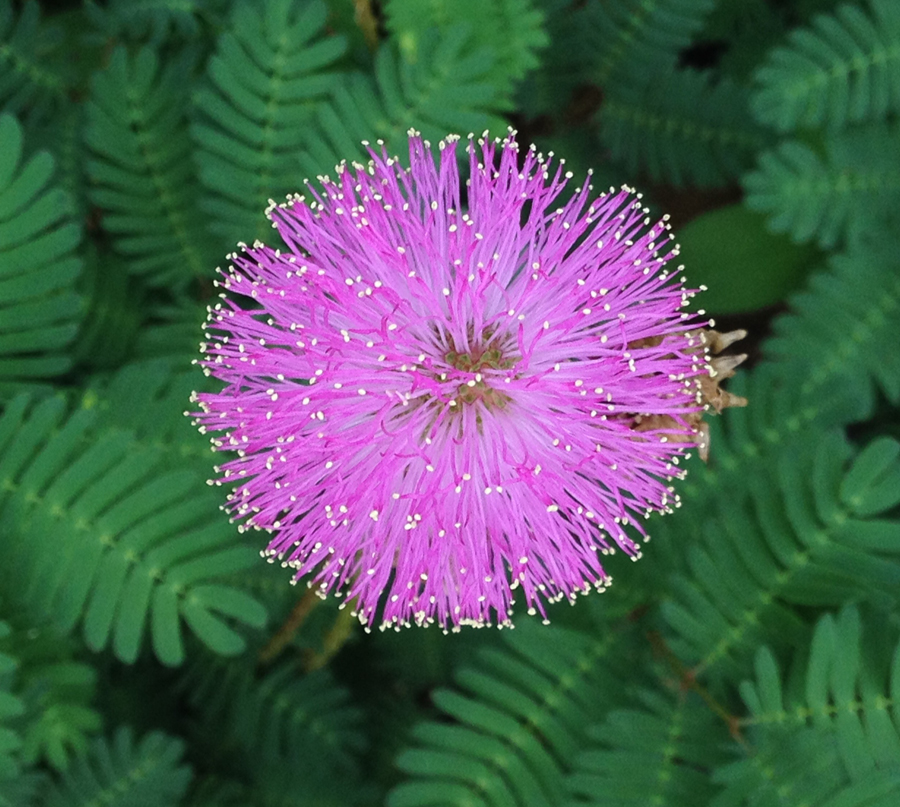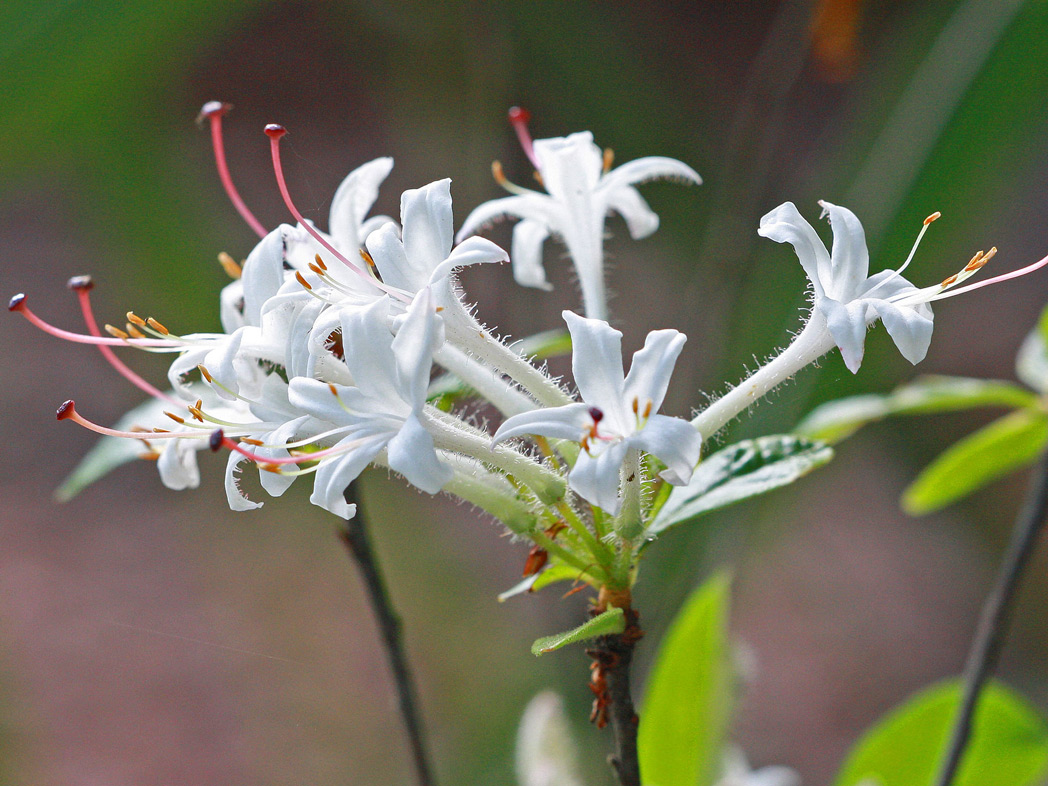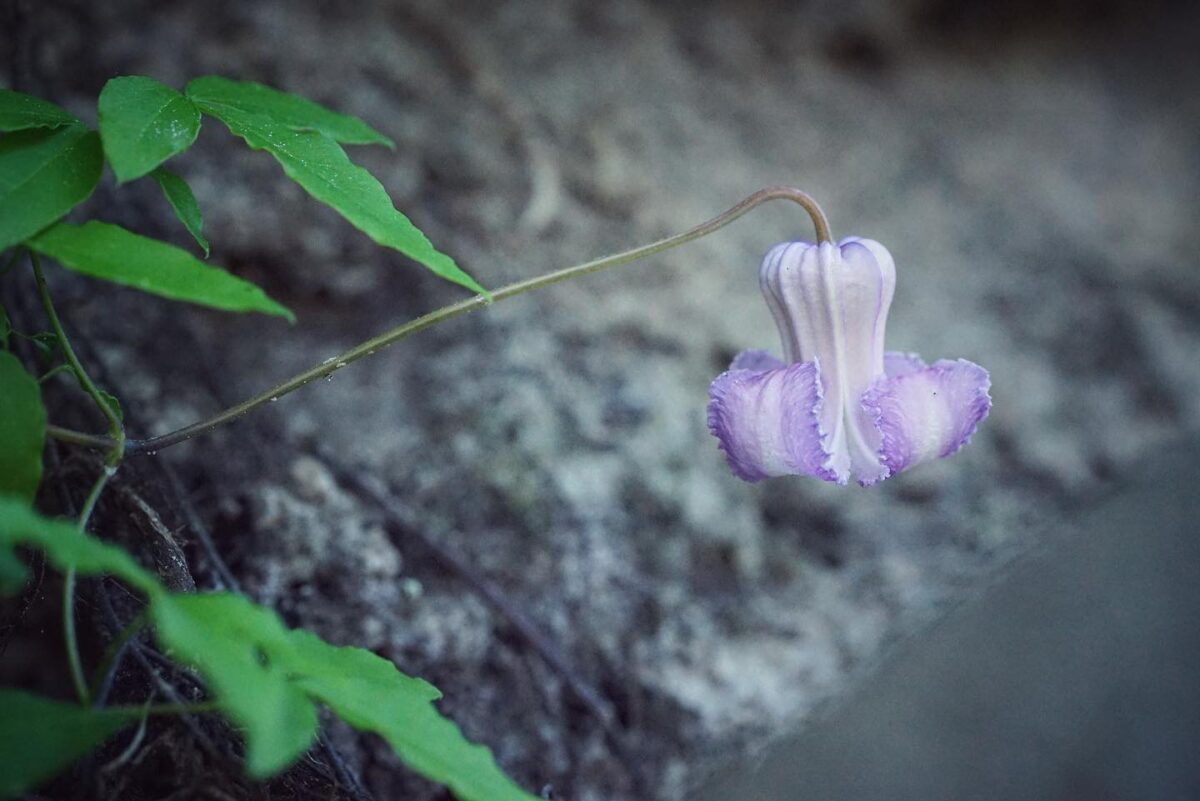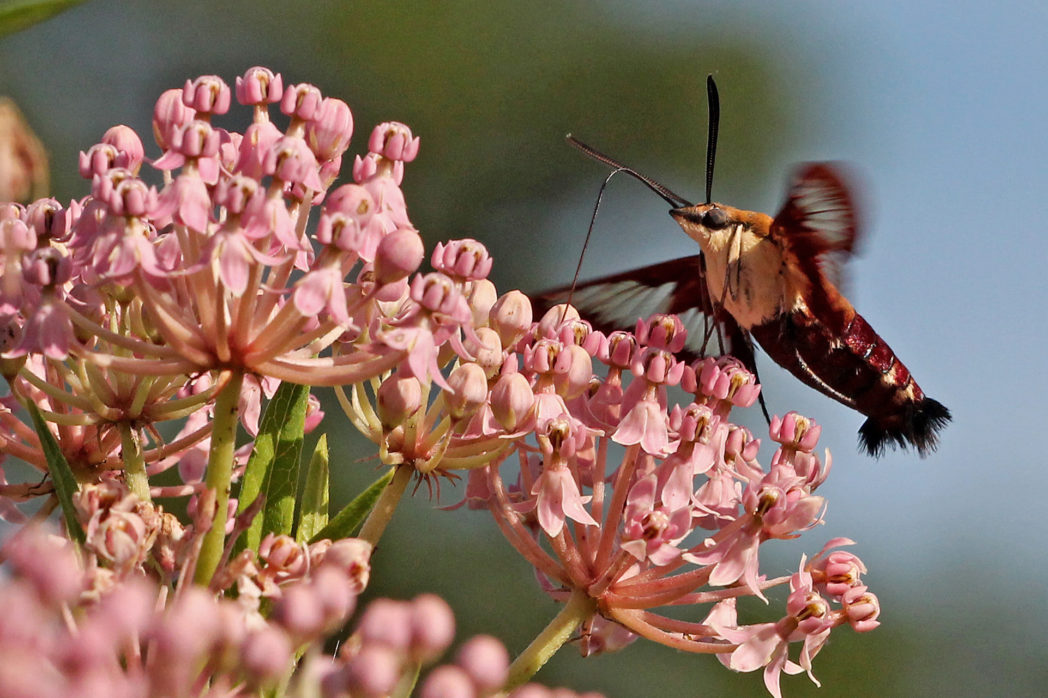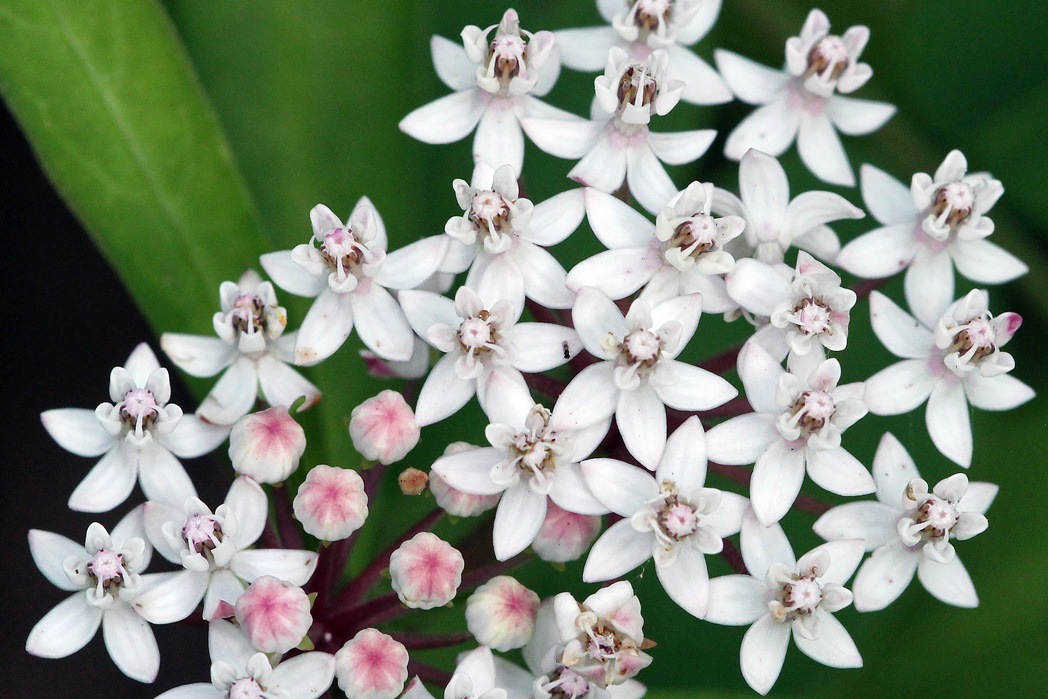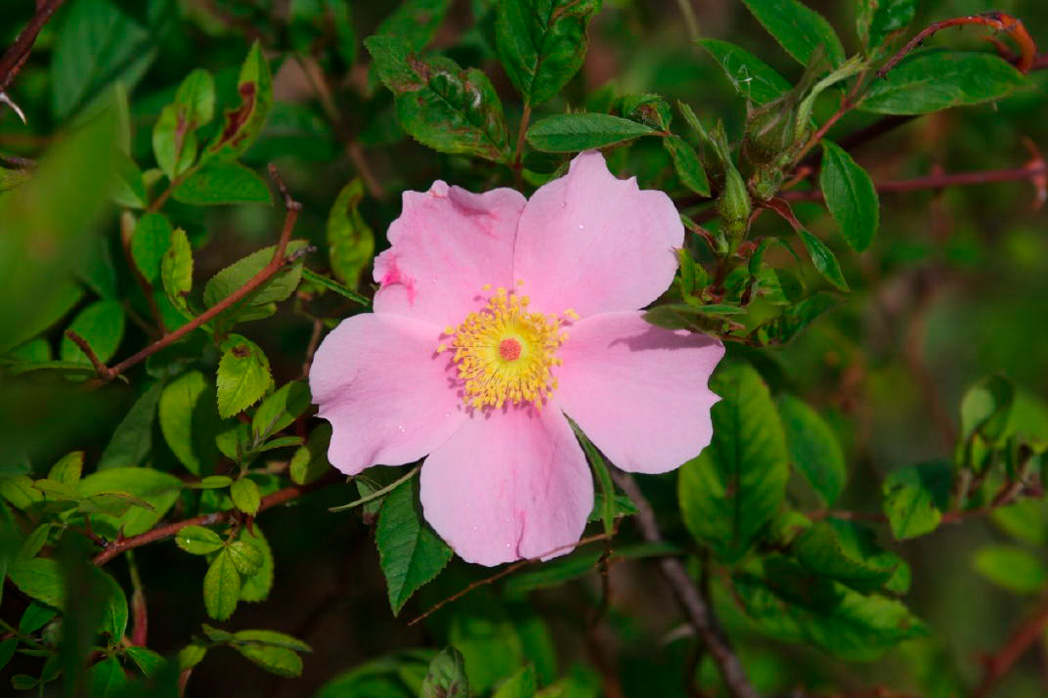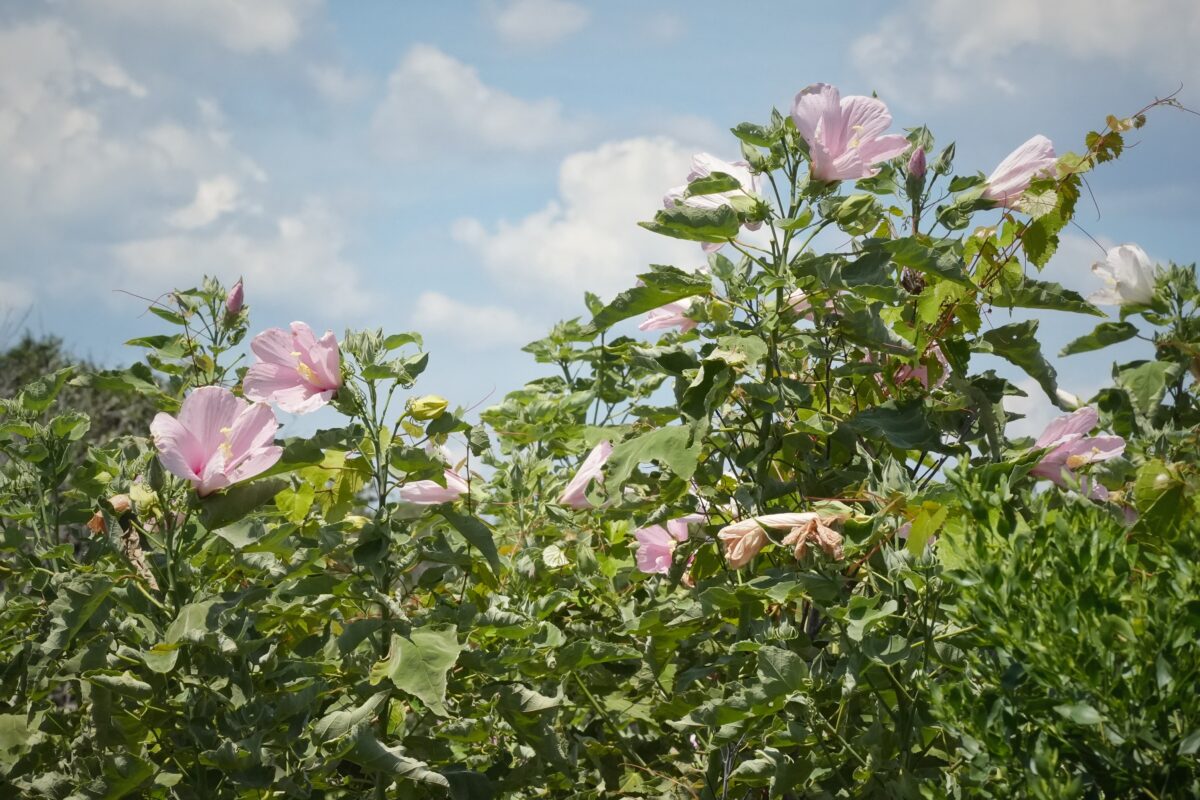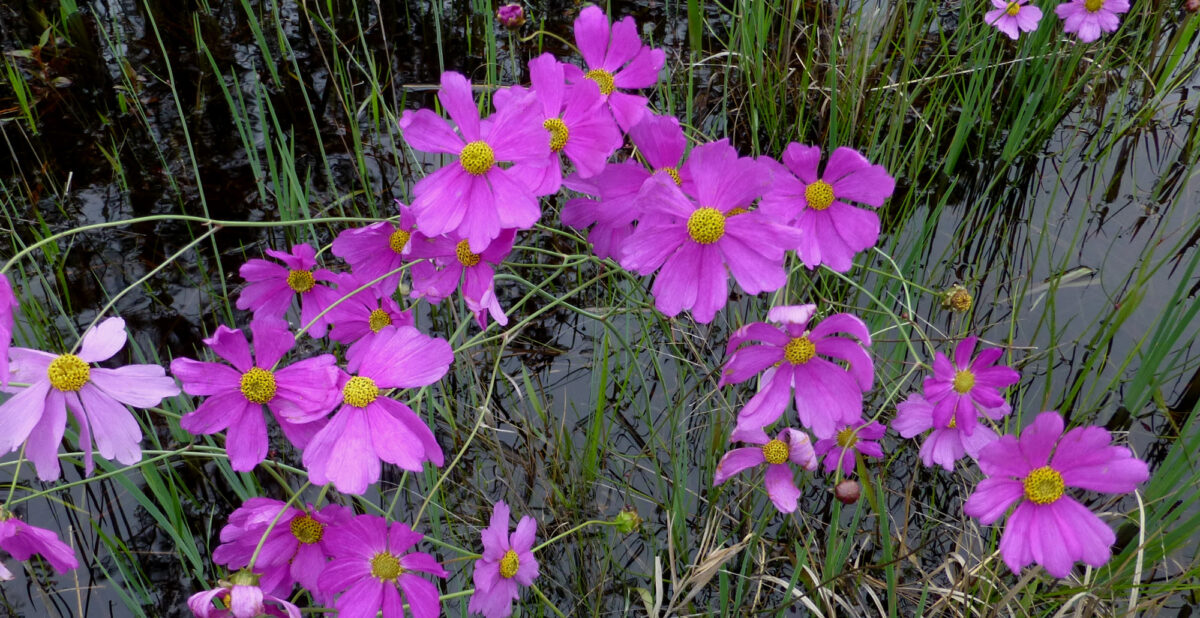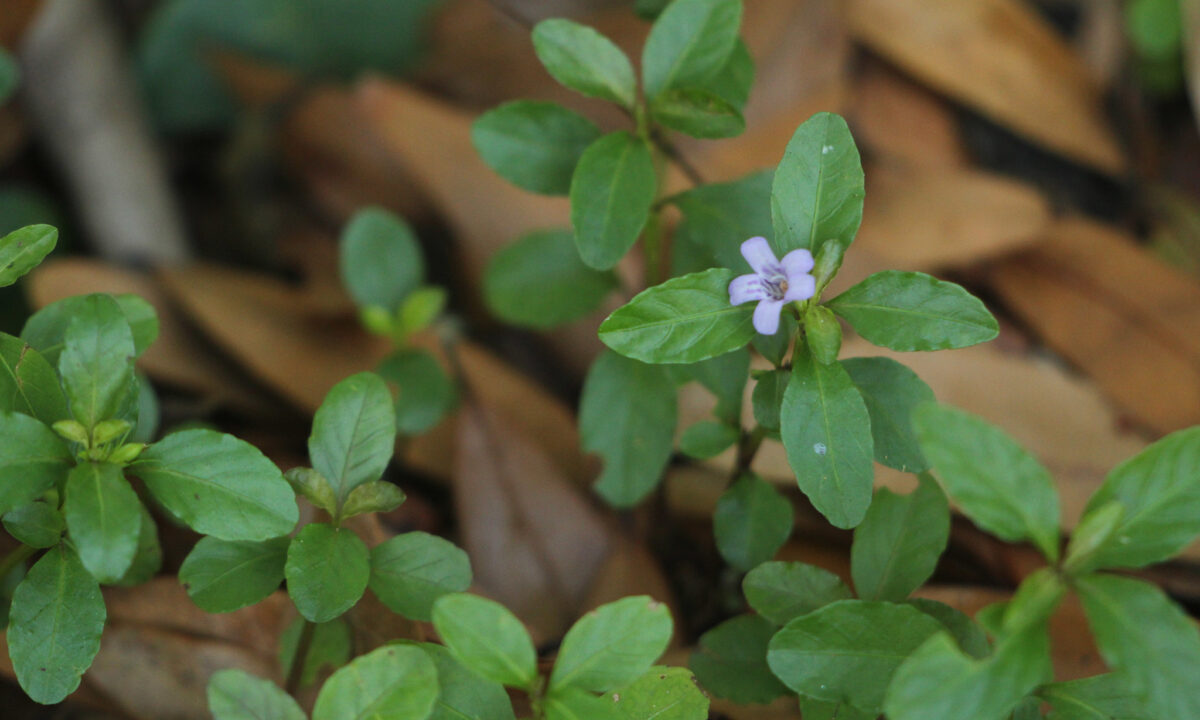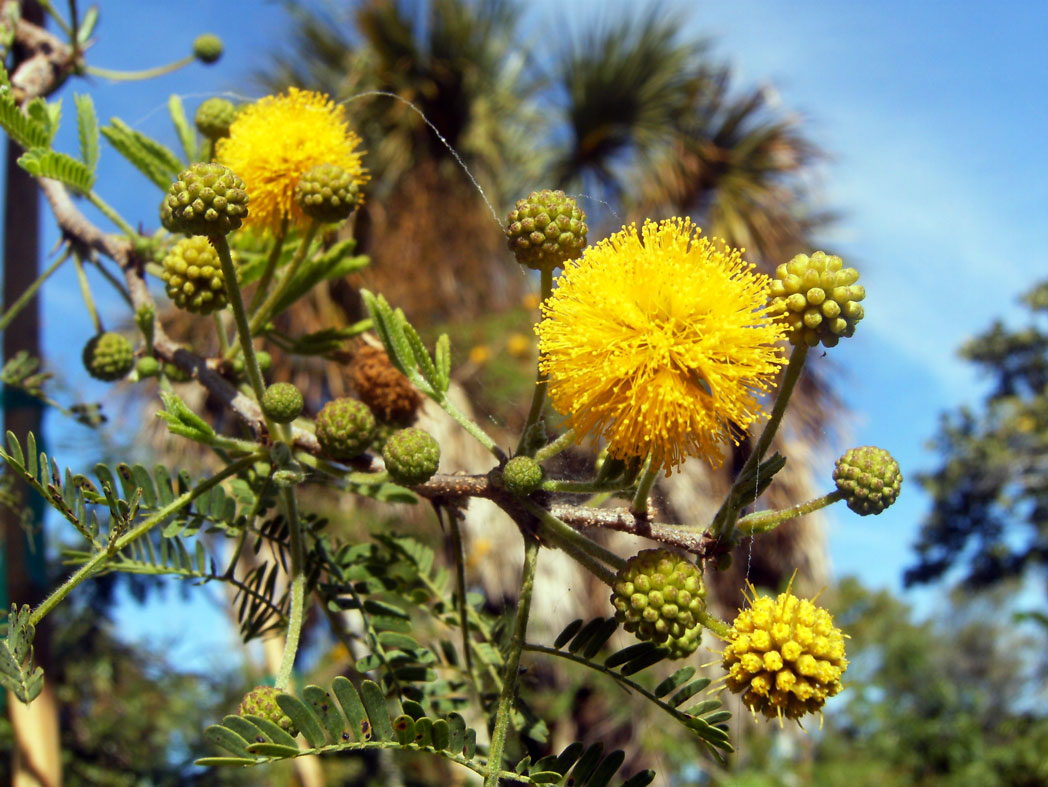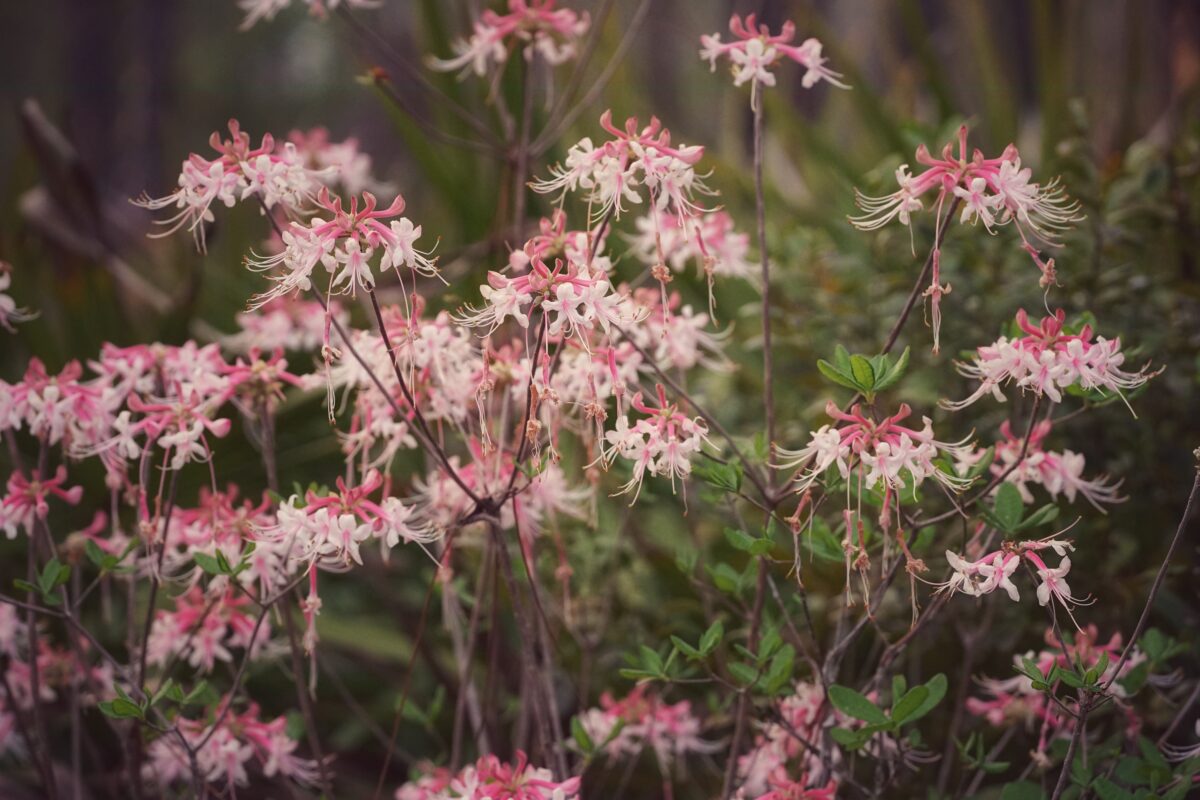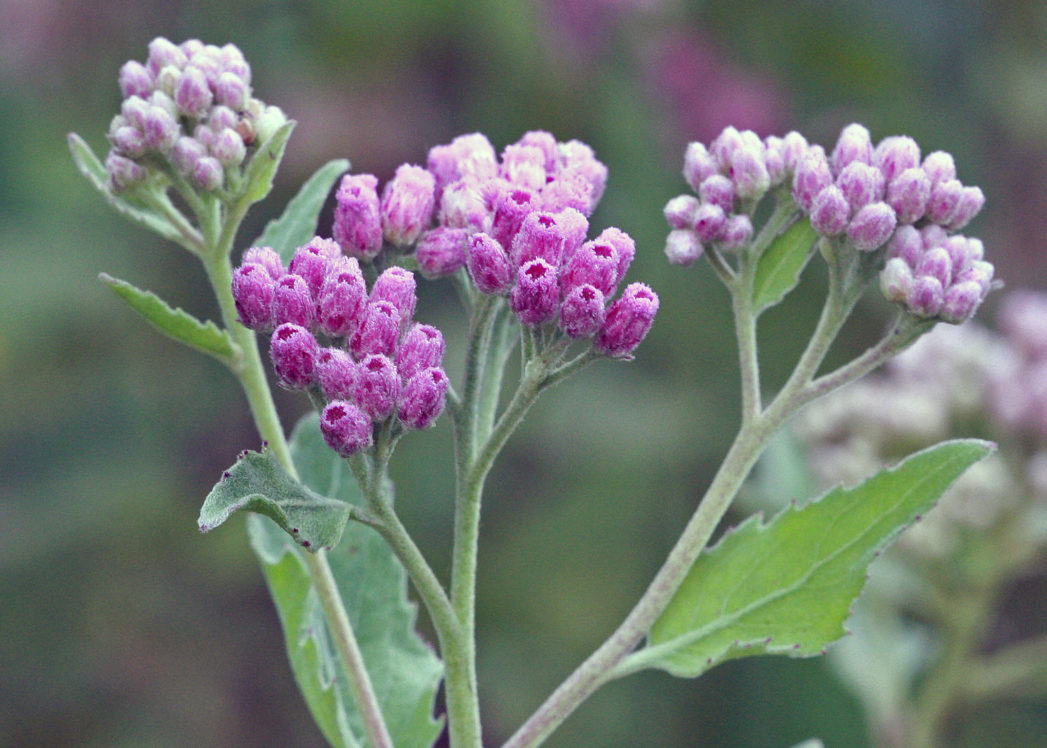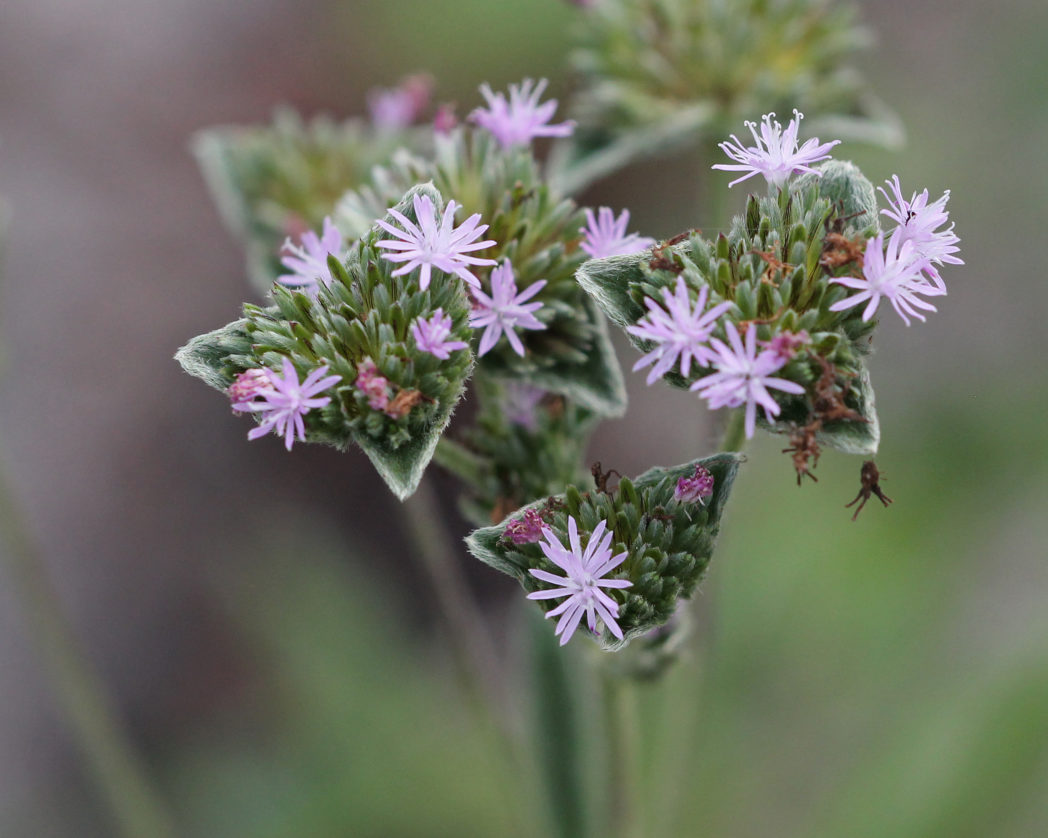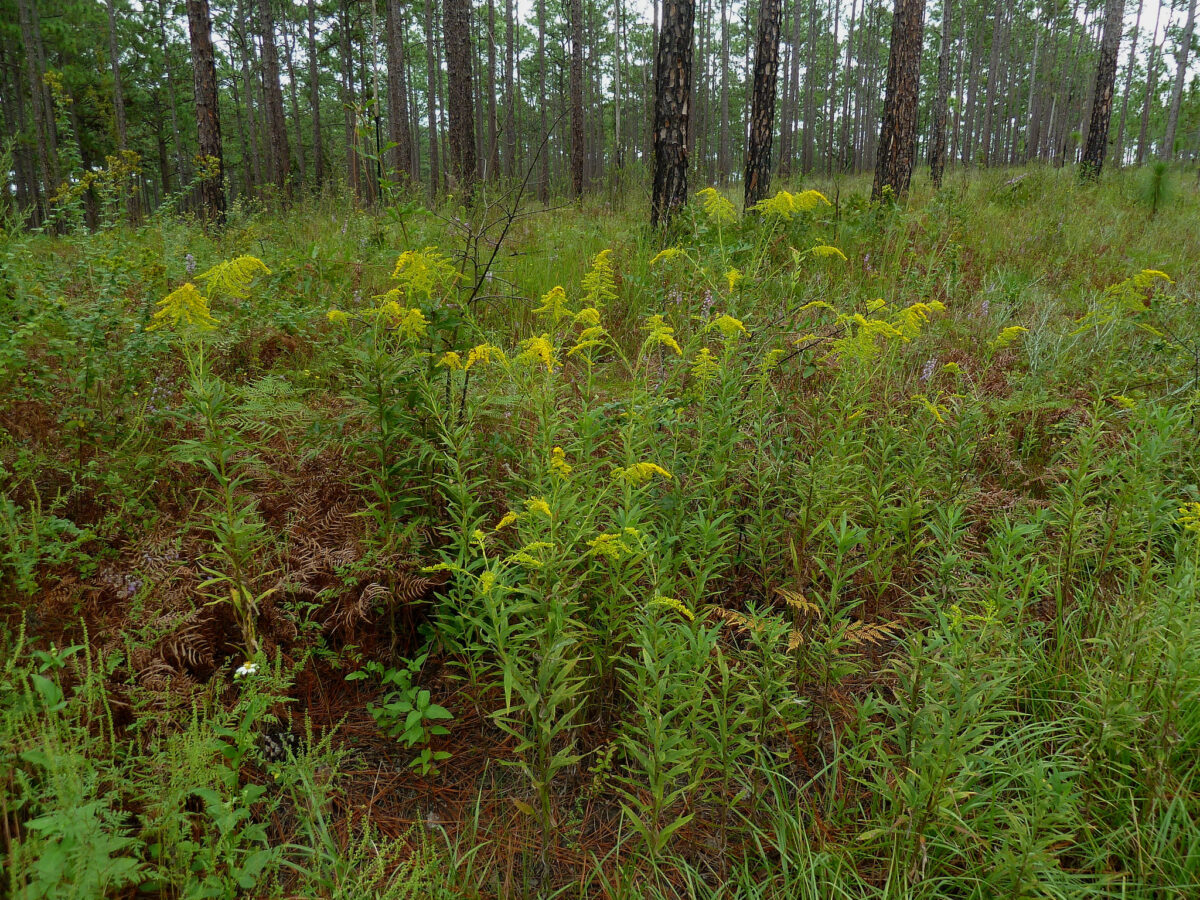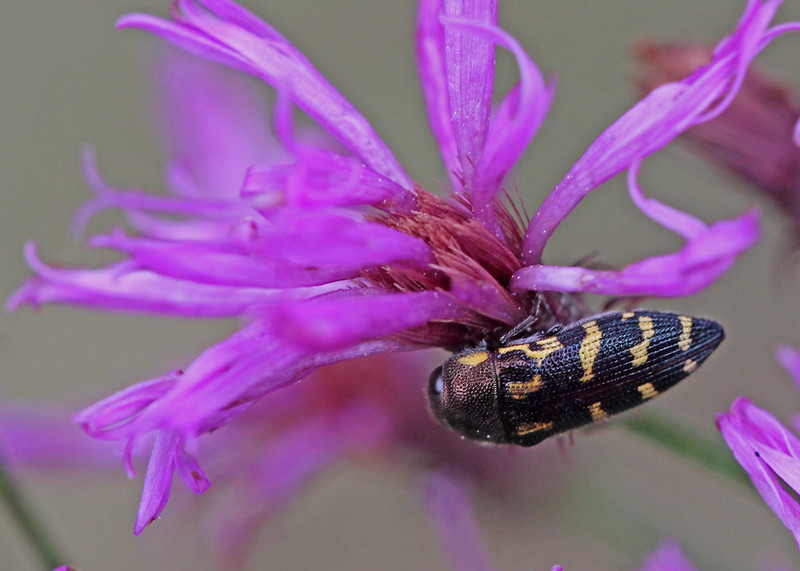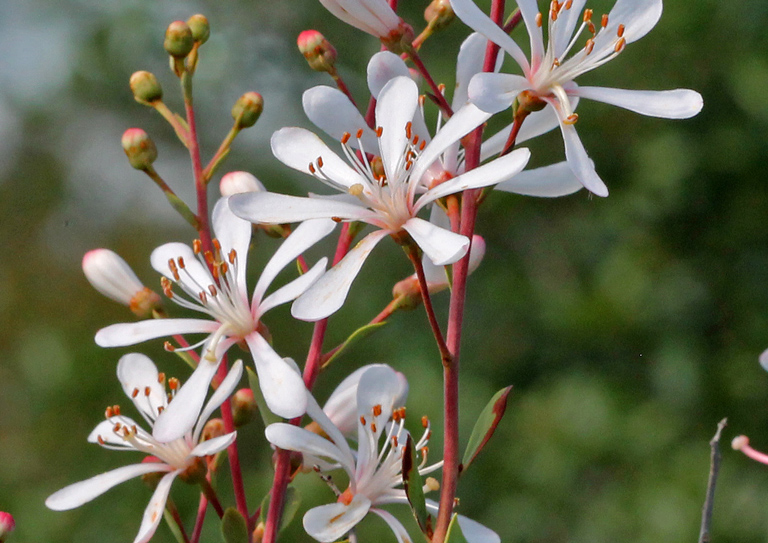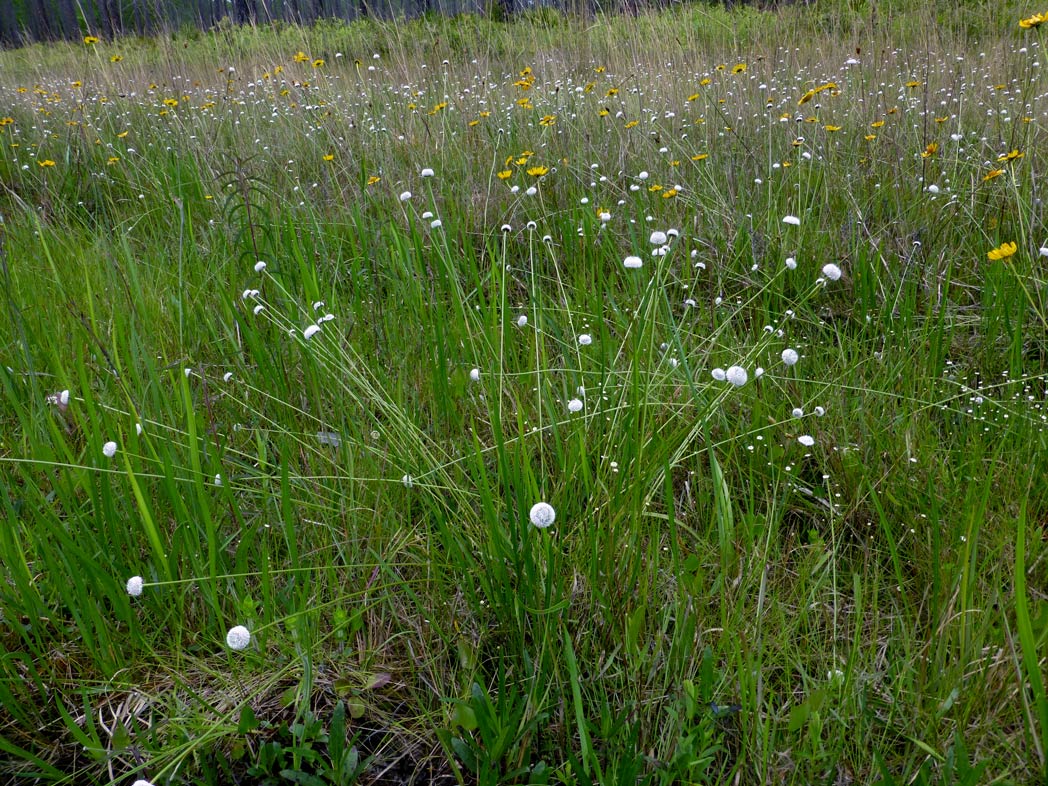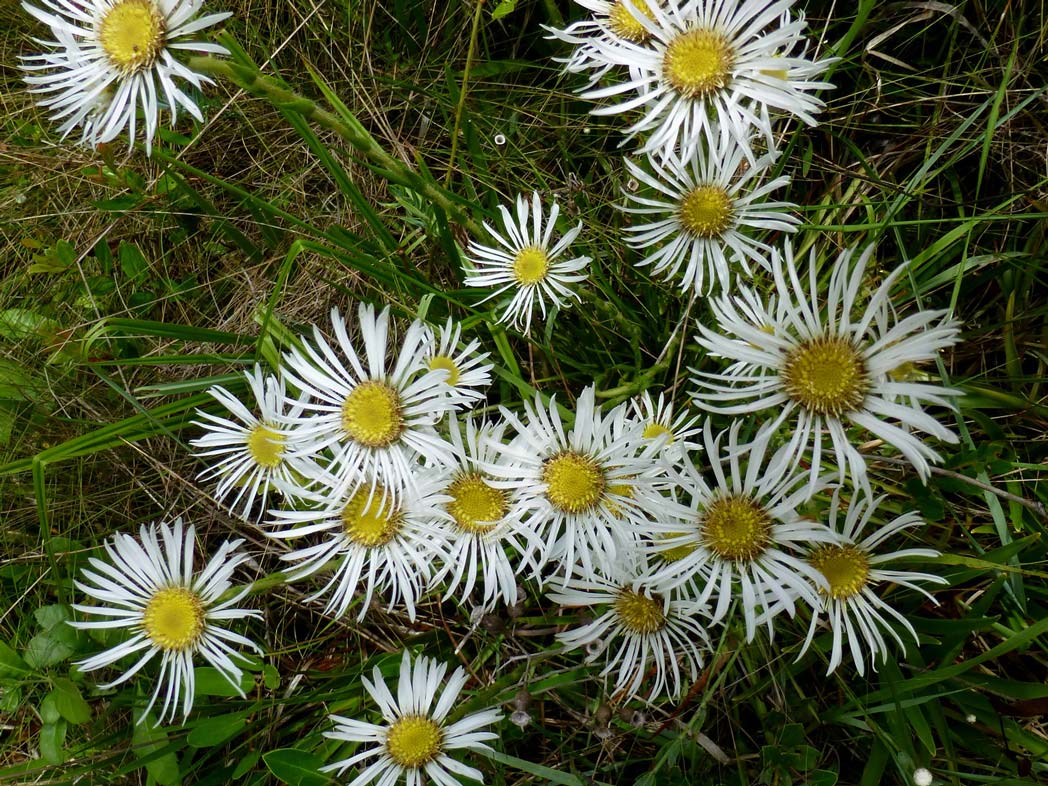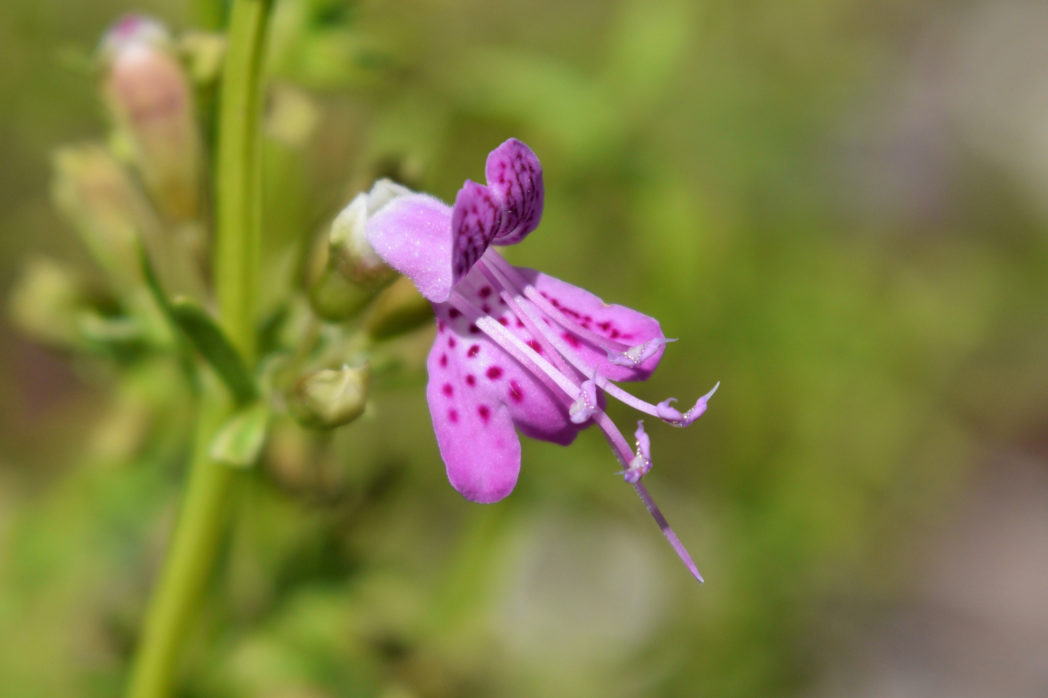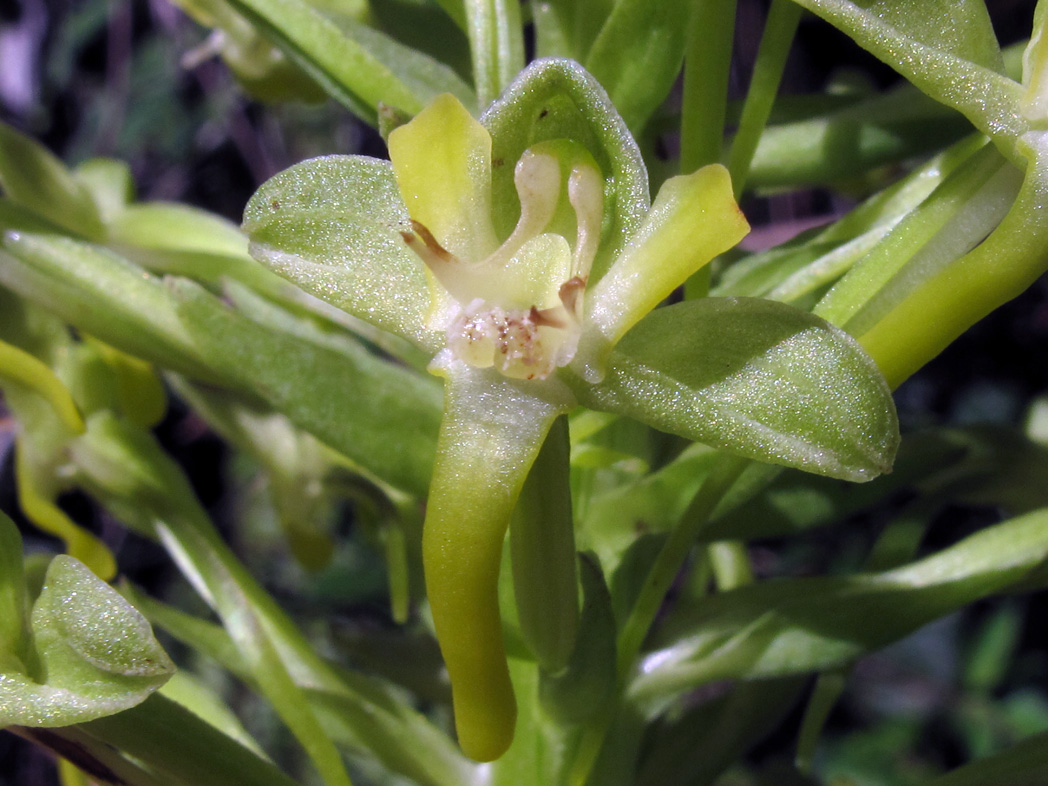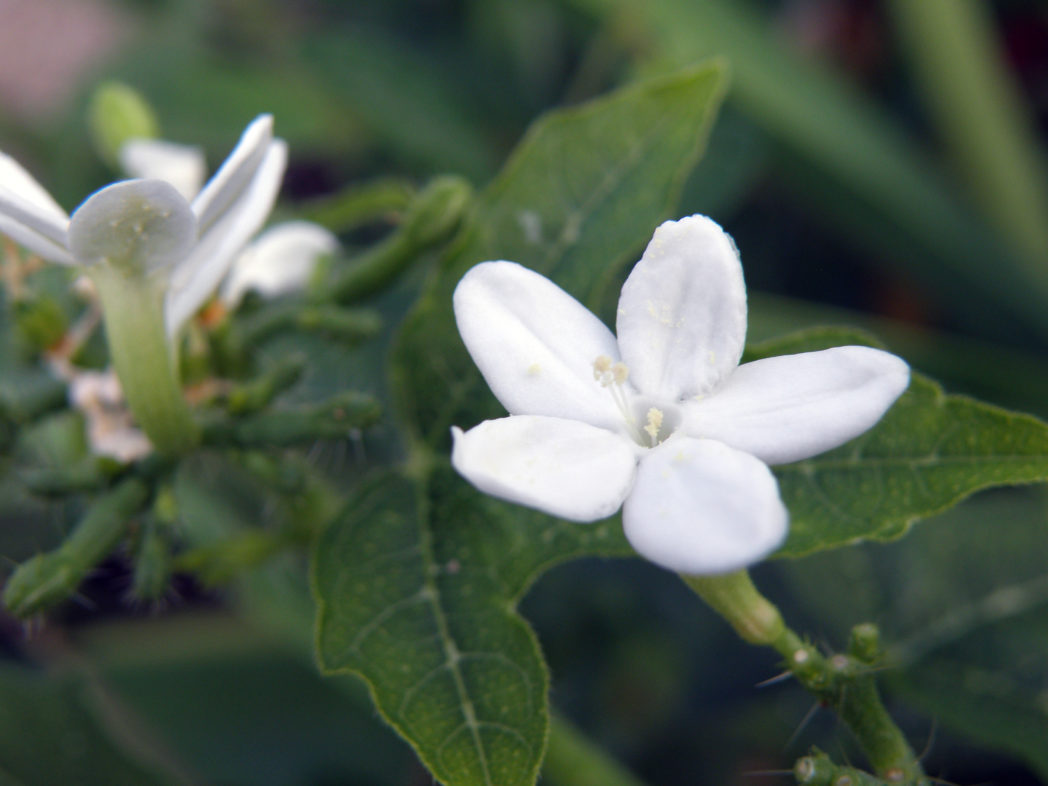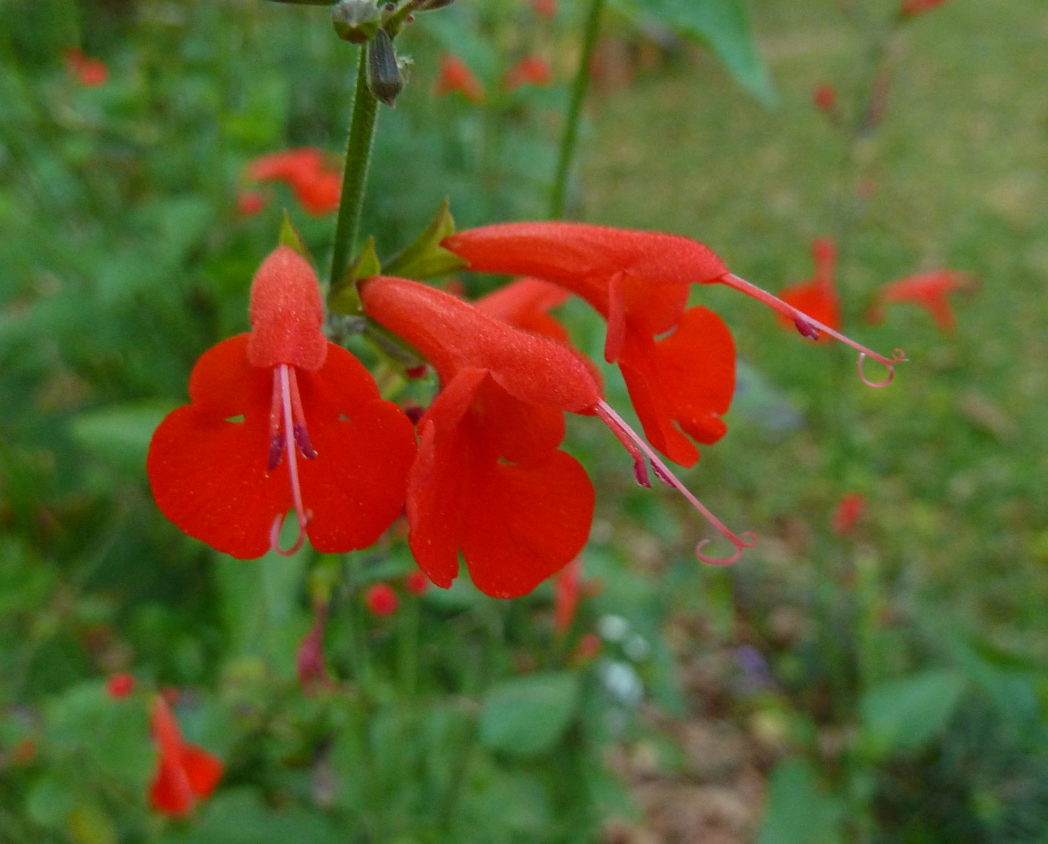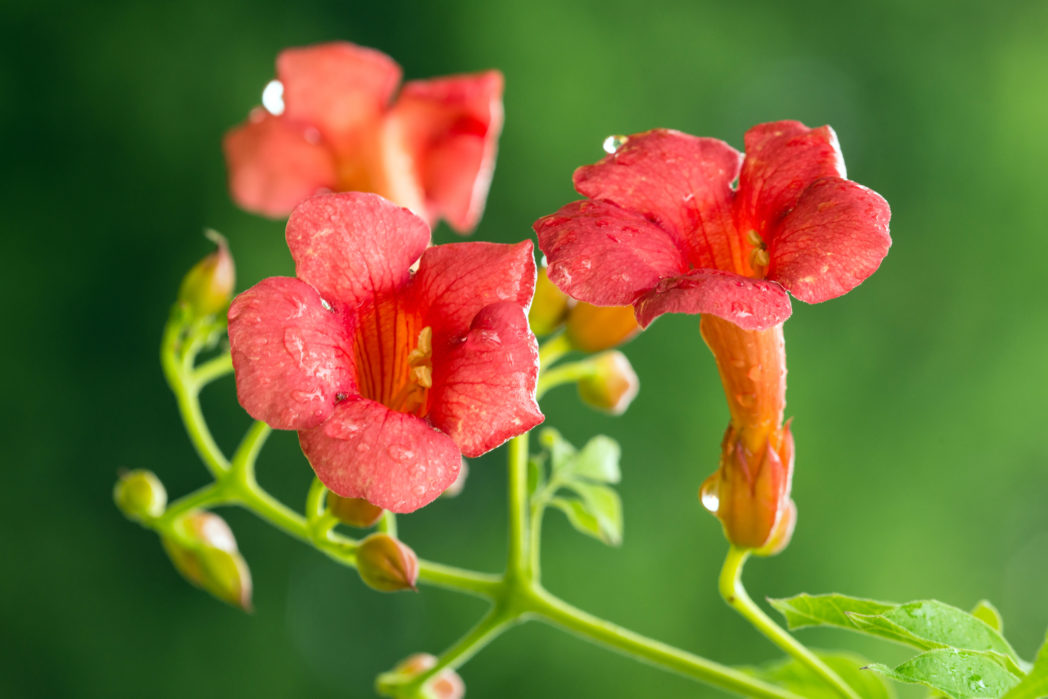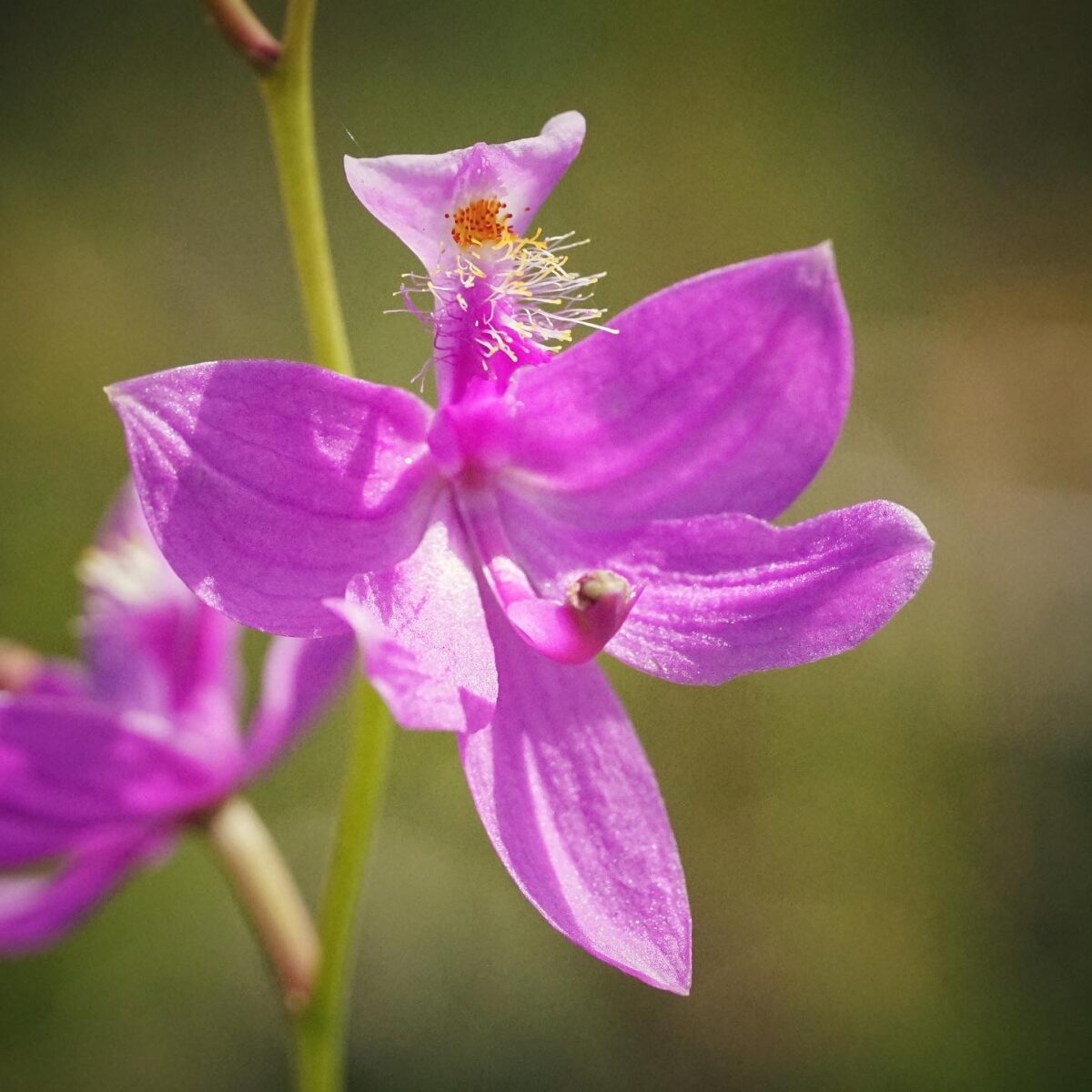Sunshine mimosa
Sunshine mimosa (Mimosa strigillosa) has showy “powderpuff” flowers that bloom spring through summer, attracting mostly bees. The plant is a larval host for the Little sulphur butterfly.
Swamp azalea
Swamp azalea (Rhododendron viscosum) is Florida’s only white-flowered and summer-blooming rhododendron. It occurs in wet flatwoods, seep and bay swamps and along lake margins and attracts a variety of pollinators.
Swamp leather-flower
Swamp leather-flower (Clematis crispa) has distinct nodding flowers that typically bloom in spring and summer, attracting a variety of pollinators. The seeds provide food for many birds and small wildlife.
Swamp milkweed
Swamp milkweed (Asclepias incarnata ) has showy pink flowers that typically bloom in summer and attract many pollinators. It occurs naturally in floodplain swamps, hydric hammocks, wet pine flatwoods and marshes.
Swamp milkweed
Swamp milkweed (Asclepias perennis) blooms in late spring through early fall and attracts many pollinators. It is a larval host plant for Monarch, Queen and Soldier butterflies.
Swamp rose
Swamp rose (Rosa palustris) blooms in late spring through early summer and attracts a variety of pollinators — especially native bees. Its fruits are consumed by birds and small mammals.
Swamp rosemallow
Swamp rosemallow (Hibiscus grandiflorus) occurs naturally in marshes and swamps, wet ruderal areas, and along edges of lakes, ponds and rivers. It is often seen in large masses.
Swamp tickseed
Swamp tickseed (Coreopsis nudata) blooms in spring and is attractive to bees, although butterflies and other pollinators are known to visit them. Birds eat its seeds.
Swamp twinflower
Swamp twinflower (Dyschoriste humistrata) is a low-growing wildflower that occurs naturally along the edges of forested wetlands. A great groundcover option for a moist to wet shady area, it attracts bees and butterflies.
Sweet acacia
Sweet acacia (Vachellia farnesiana) is an aptly named shrub to small tree with golden, sweet-scented flowers that bloom year-round, peaking in winter. These nectar-rich flowers attract a variety of pollinators, especially butterflies like the Red-banded hairstreak. The plant’s dense foliage provides cover for birds and small animals. Few birds eat the pods. Sweet acacia occurs naturally in pinelands, coastal hammocks and shell middens throughout Central and South Florida, with rare populations in three Panhandle counties. In Europe, the plant is cultivated for use in perfumes.
Sweet pinxter azalea
Sweet pinxter azalea (Rhododendron canescens) has showy pinkish- to rose-colored flowers that bloom in spring. They attract a number of pollinators, including hummingbirds.
Sweetscent
Sweetscent (Pluchea odorata) has rosy pink blooms that appear summer through fall. Its sweet-smelling leaves and flowers are very attractive to butterflies and bees.
Tall elephantsfoot
You’d probably expect an elephant-sized flower from a plant called Tall elephantsfoot (Elephantopus elatus), but it’s not the flower that gives this plant its name.
Tall goldenrod
Tall goldenrod’s (Solidago altissima) impressive display of golden flowers from late summer through fall attracts numerous pollinators, including butterflies, bees and beetles. Soldier beetles are especially attracted to the nectar-rich blooms.
Tall ironweed
Tall ironweed (Vernonia angustifolia) is a robust perennial wildflower that blooms in summer and fall, attracting a variety of pollinators, especially butterflies.
Tarflower
Tarflower (Bejaria racemosa) is a woody evergreen shrub with showy white to pinkish flowers. It occurs naturally in scrub, pine flatwoods and scrubby flatwoods and is found in most of peninsular Florida.
Tenangle pipewort
Also known as Hat pins and Bog buttons, Tenangle pipewort (Eriocaulon decangulare) is a wildflower easily recognized by its many white button-like flowers.
Thistleleaf aster
Thistleleaf aster (Eurybia eryngiifolia) is an herbaceous perennial wildflower. Its fairly large flowers bloom late spring through fall and are loved by many bees and butterflies.
Titusville balm
Titusville balm (Dicerandra thinicola) is a state-listed endangered wildflower endemic to Brevard County where it is restricted to an approximately 30-mile range.
Toothpetal false reinorchid
Toothpetal false reinorchid (Habenaria floribunda) is one of Florida’s most common terrestrial orchids. It is found in swamps and hardwood forests throughout most of peninsular Florida and typically blooms fall through winter. The semi-showy flowers are aromatic, emitting either a sweet fragrance or an unpleasant odor, depending on who you ask.
Tread-softly
Tread-softly (Cnidoscolus stimulosus) is a low-growing prickly wildflower. It’s easy to see how it gets its common name, and its scientific name is just as telling.
Tropical sage
Tropical sage (Salvia coccinea) is a versatile perennial wildflower that no pollinator can resist, but it is particularly attractive to bees, large butterflies and hummingbirds.
Trumpet creeper
Trumpet creeper (Campsis radicans) is a high-climbing woody vine so named because its showy flowers are trumpet-shaped. They bloom year-round and are very attractive to hummingbirds.
Tuberous grasspink
Tuberous grasspink (Calopogon tuberosus ) is a showy terrestrial orchid that blooms across Florida each spring. It occurs in bogs and wet flatwoods, prairies and roadsides.

